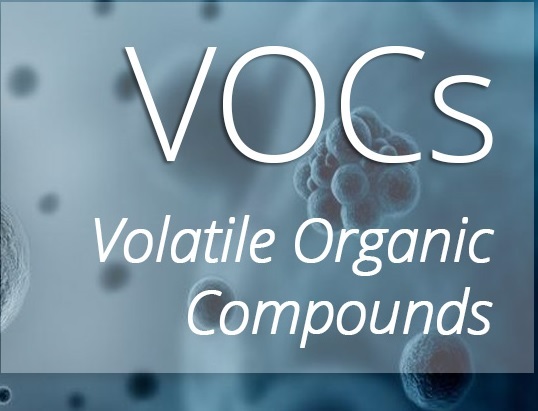Volitile Organic Compounds
Volatile organic compounds (VOCs) are a diverse group of organic chemicals that can easily evaporate at room temperature. They are composed of carbon, hydrogen, and sometimes other elements such as oxygen, nitrogen, or sulfur. VOCs are found in many natural and man-made sources, including:
- Plants: Some VOCs are emitted by plants as part of their natural processes, such as isoprene and terpenes.
- Industrial processes: Many VOCs are used as solvents, degreasers, or cleaning agents in industries like manufacturing, painting, and printing.
- Household products: VOCs can be found in products like paint, varnish, cleaning supplies, air fresheners, and building materials.
- Fuels: VOCs can be released during the combustion or evaporation of gasoline, diesel, and other fossil fuels.
- Food and beverages: Some VOCs occur naturally in food or are produced during the cooking process.
VOCs can have various impacts on the environment and human health. Some VOCs contribute to the formation of ground-level ozone (smog) when they react with nitrogen oxides in the presence of sunlight. This can lead to air quality issues and negative health effects, particularly for people with respiratory issues like asthma.
Additionally, some VOCs are toxic or can cause long-term health effects, such as cancer or damage to the central nervous system. Examples of such compounds include benzene, formaldehyde, and perchloroethylene. Due to these potential risks, regulations and guidelines have been established to limit VOC emissions and exposure in various settings.

